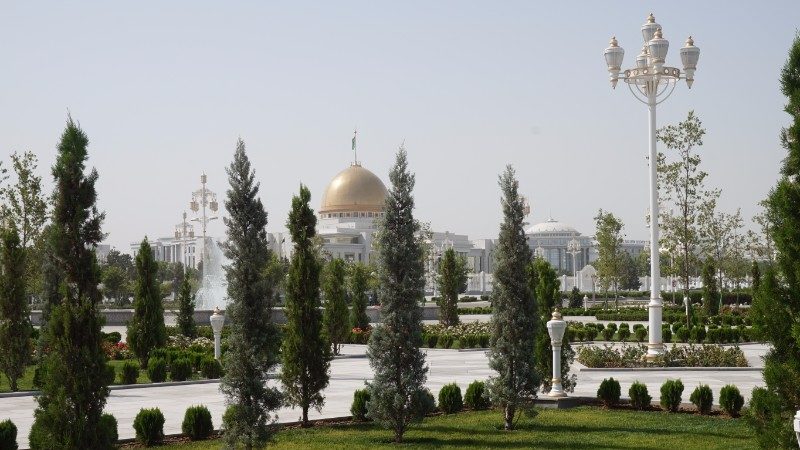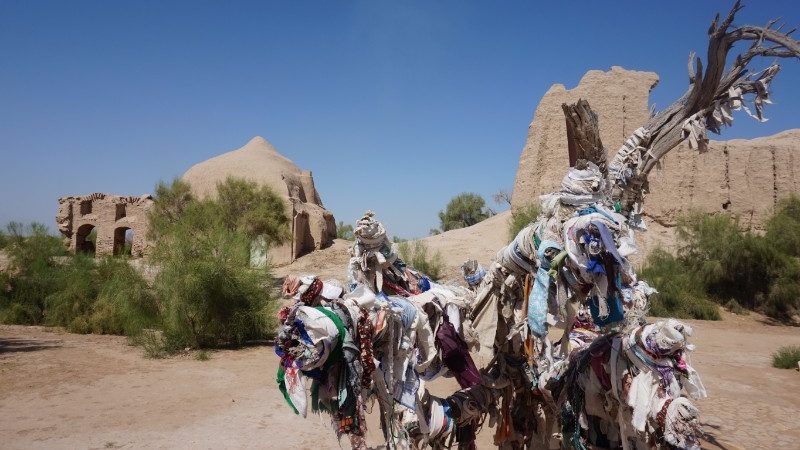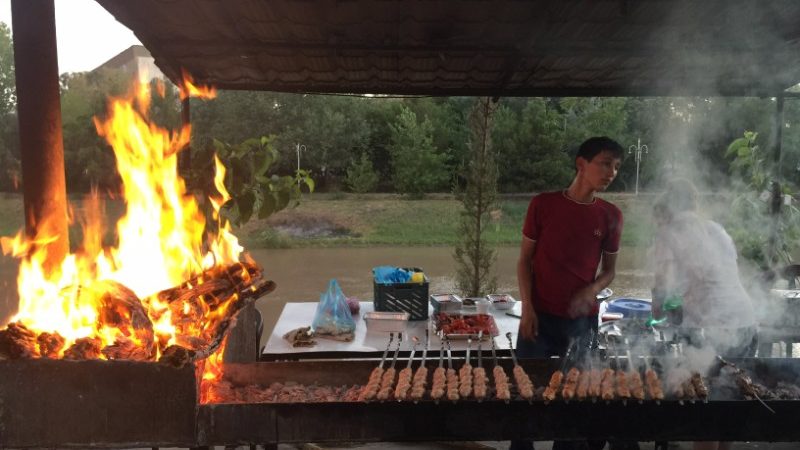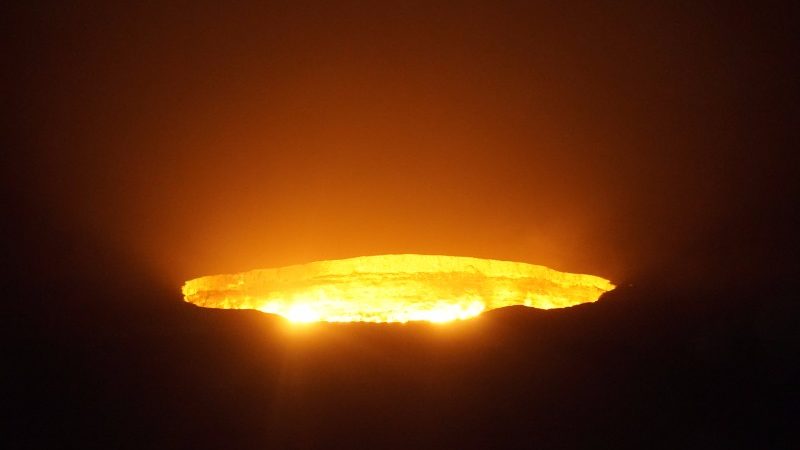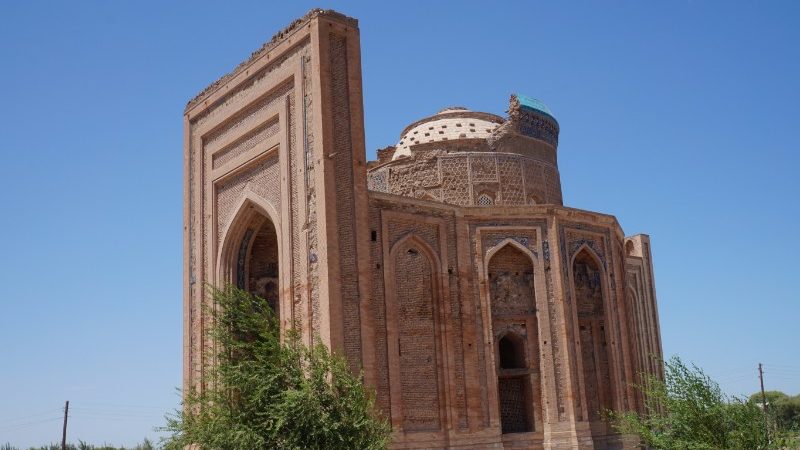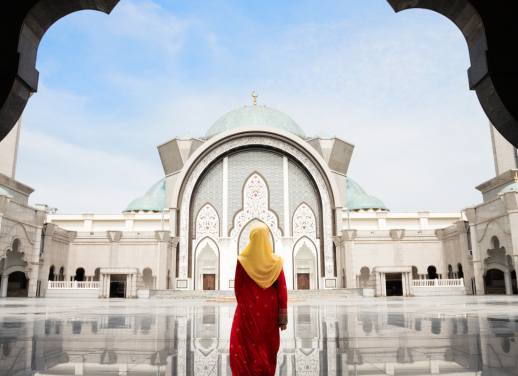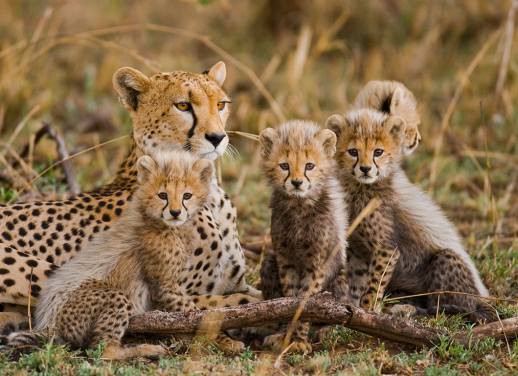Long touted as ‘North Korea with oil’, this Central Asian country sees five times fewer visitors each year than Kim Jong Un’s secretive nation, but that’s all the more reason to visit Turkmenistan.
The gateway to the Silk Road from the Middle East is distinct from the other ‘Stans’ in culture, history, and landscape, and for sheer craziness, there is nowhere else in the world quite like it.
Why you should go
Think Middle Eastern hospitality – after three shots of vodka. Being well off the tourist trail, you’ll find genuinely curious people, proud to let you in on their fascinating history and traditions, and ply you with the best things in life.
Central Asia has long been the crossroads of empires from the ancient Persians through Genghis Khan, imperial Britain and Russia, and most recently as the southernmost tip of the Soviet Union.
When the USSR crumbled in 1991, the five Central Asian states became countries in their own right for the first time, and replaced communism with burgeoning national identities. Turkmenistan soon became known for the bizarre personality cult of the late President Niyazov, who died in 2006, turning the capital Ashgabat into a shrine to himself, including a golden statue that rotated with the sun.
Culture
Turkmen culture is far more than just Niyazov and his successor, current president Gurbanguly Berdimukhamedov, although there’s plenty of propaganda books you can buy to remember them long after you’ve left.
Descendants of nomadic desert tribes, the Turkmen infuse their Islam with animism. You’ll find pilgrims’ shrines dotted all around the country, with locals stopping to worship, leave items for luck, and attend to rituals, like walking around minarets in circles.
Bread is sacred to the Turkmen, so it’s only broken by hand, and never, ever thrown out. Towards Niyazov’s last, maddest days, he even renamed it Gurbansoltan, after his mother.
While there’s lots of regional cuisine, like plov (a delicious Uzbek rice dish), and Russian favourites including caviar from the Caspian Sea, Turkmenistan’s speciality is shashlyk, open-coal barbecued meat and vegetables that take on an almost magical deliciousness, washed down, of course, with beer and vodka.
What to expect
With such an unusual history, be prepared for a few wild travel moments. The border crossing is an experience in itself, and the guards will almost certainly go through your luggage – my friend and I even found ourselves having to mime the role of the contraceptive pill, and let the guards play with our iPhones and show them photos of life back home.
In a repressive political climate, it won’t come as much of a surprise that the police can be sensitive about photography, particularly around government buildings in Ashgabat. Your best bet it is to ask your guide, but if you’re alone or feeling cheeky, be discrete, and if stopped (police will usually whistle), be prepared to show them your camera and offer to delete offending snaps. Local women may also be adverse to having their photograph taken, so always ask first.
As a female traveller in a culturally conservative place, take the usual precautions like not walking alone at night, but the only trouble you’re likely to encounter is a bit of staring.
READ MORE: WANT TO KNOW WHAT OVERLAND TRAVEL LOOKS LIKE? THIS.
Where to go:
Ashgabat
The capital, which means city of love, is an oasis of some five million square metres of white marble. Grand government buildings lacquered with gold are visible around the city, as well as monuments to leaders and the nation’s beloved Akhal-Teke horse.
If that’s not absurd enough for you, there’s a park featuring a giant Ruhnama, the rambling book of commandments written by Niyazov that was once the centrepiece of the education system. The city also hosts a statue of Lenin from Soviet times, placed upon a large, carpeted plinth.
Ashgabat is the place for more standard tourist activities too, home to the country’s best museums, showcasing arts and artifacts, as well as numerous bazaars where you can buy carpets, souvenirs, and fresh food (stone fruit and nuts are a must).
Darvaza gas crater
Almost 80% of the country is desert, meaning summers are baking and it’s fairly warm all year round. No place is hotter than Darvaza’s gas crater, the fire pit in the middle of the Karakum desert, otherwise known as ‘the gateway to hell’.
In the 1970s, a gas drilling project went wrong and created a fire that has never gone out. Spectacular in the dark, the surrounding desert provides a perfect camping ground for a night of photography under sparkling skies.
Konye-Urgench
The heritage-listed ancient town is a stark contrast to Ashgabat’s futuristic architecture. Featuring two minarets, one dating back to the 1300s, an ancient mosque and mausoleum, it is an open-air museum to past empires, and you’ll see many Turkmen making their pilgrimage there from across the country.
Finally…
President Berdimukhamedov has made some tentative steps towards opening up the country, but as a tourist, it remains a curious contradiction of a closed yet highly welcoming society. If you’ve picked up any Russian in your travels, most people will understand it, but knowing a few words in Turkmen will really impress. Salam (hello) and sahg-bol-ung (thank you) is a sure way to make new friends in one of the most fascinating places you’ll ever visit.
Inspired? Ready to see what all the fuss is about? Explore incredible Turkmenistan with Intrepid.
Feature image by Elle Hardy.

